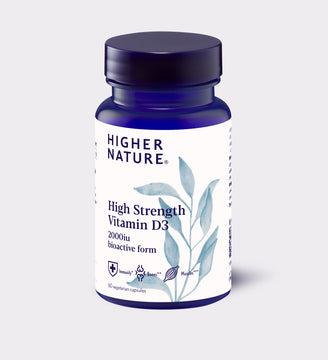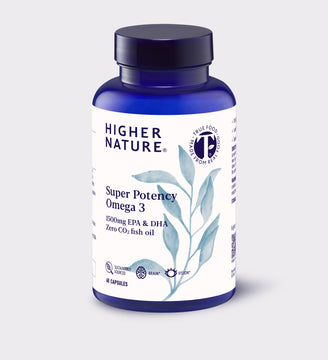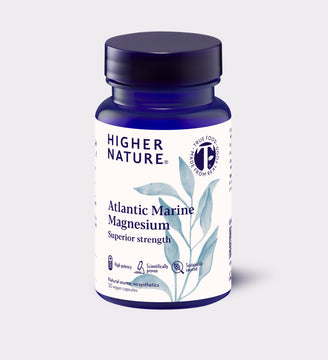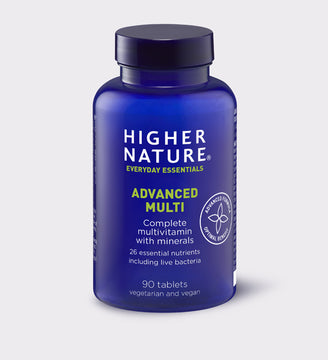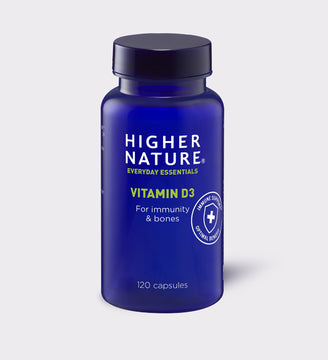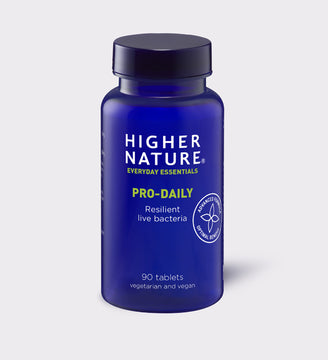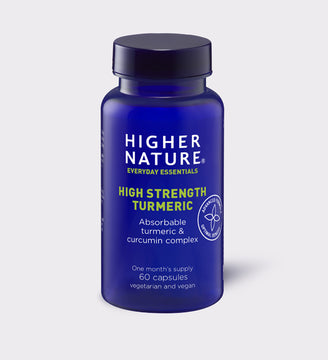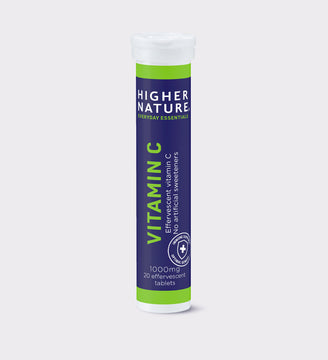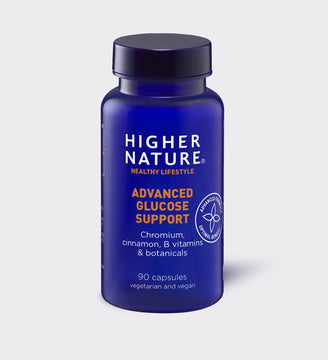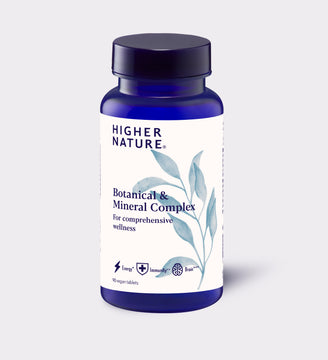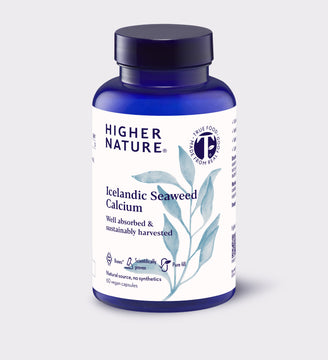
Does social isolation cause inflammation?
Higher Nature Nutrition Team
In these unprecedented times of the coronavirus pandemic, “social isolation” - unfamiliar to us just a short time ago - has unfortunately become the norm for many people, particularly the elderly, and may affect many more of us in the weeks to come.
We are by nature social animals, with friends and family occupying much of our time, so having to self-isolate presents all sorts of challenges not only to our physical well-being but also to our mental health.
Now, research from the University of Surrey and Brunel University London suggests that social isolation is actually linked to physical inflammation in the body.
Inflammation
There are two types of inflammation – firstly the acute type of inflammation that we can easily see as a result of injury, trauma, surgery, infection and allergies. This might be classed as a “good” type of inflammation as it is the body’s natural protective response to sickness or injury, helping to stimulate healing. Secondly, there is the underlying and more chronic form of low-grade inflammation, that we can’t see, which is linked to increased risk of conditions such as obesity, type 2 diabetes, rheumatoid arthritis, cardiovascular and auto-immune diseases as well as depression and Alzheimer’s disease.
Study results
The research published in Neuroscience and Biobehavioural Reviews (1) analysed 30 previous studies and found that social isolation was associated with the presence of C-reactive protein (CRP), a protein substance normally released into the bloodstream within hours of a tissue injury. CRP levels are increased not only during acute-phase inflammation, but also in chronic inflammatory diseases. The study also found that social isolation was linked to increased levels of the glycoprotein, fibrinogen, which is converted into fibrin-based blood clots.
How to minimise inflammation through diet
Whilst inflammation is a natural part of the healing process following physical injury or infection, as we have seen, chronic low level inflammation is linked to many debilitating conditions and is not something we want to encourage! The good news is that you can help your body to minimise inflammation by eating certain foods and avoiding others.
Take back control!
One of the best known anti-inflammatory diets is the Mediterranean diet.
Clinical studies have indicated the benefits of a Mediterranean-type diet in reducing levels of CRP and other pro-inflammatory biomarkers such as TNF-alpha and NFkB.
More a way of life than a “diet” in the slimming sense, the Mediterranean way of eating is renowned for its high consumption of fresh fruits, vegetables, legumes, nuts, whole grains, fish and olive oil with modest amounts of lean meat and dairy. Rich in fibre, polyphenols, antioxidants and omega 3 fatty acids and relatively low in saturated fat and refined carbohydrates, it is also a delicious way to consume all those health-giving nutrients!
Lets take a more detailed look at some of the best foods to help manage inflammation:
Garlic
When the garlic bulb is crushed, ground, or cut, the alliin constituent is converted to allicin, described as the 'mother' substance of garlic and believed to be responsible for many of its health giving properties. In common with onions and leeks, it also contains the anti-inflammatory compound, diallyl disulfide. This has been shown to release hydrogen sulphide, thought to promote blood vessel dilation, which in turn may support healthy blood pressure.
Garlic can be used as the basis for practically any cooked meal, or added raw to salad dressings. Eating a few sprigs of fresh parsley after consuming raw garlic helps to neutralise its odour!
Berries
Anthocyanins are important plant compounds found notably in blueberries, blackberries, strawberries and raspberries, that are thought to have anti-inflammatory and antioxidant activity.
Why not add a mix of colourful berries to sugar-free breakfast cereal or natural yoghurt or make a delicious smoothie blending blueberries, avocado, almond milk, yoghurt and water!
Cherries are another tasty fruit, rich in plant compounds such as anthocyanins and catechins, to fight inflammation. A presentation by Oregon Health & Science University scientists proposed that “tart cherries have the highest anti-inflammatory content of any food”.
Oily Fish
Oily fish such as sardines, mackerel, salmon and herring are rich in EPA and DHA, two long-chain omega 3 fatty acids that promote anti-inflammatory activity in the body. One way that this occurs is thought to be via metabolisation of the omega 3 fatty acids into a class of inflammation-dampening compounds called resolvins and protectins.
Flax Seeds
Flax seeds are a great source of the plant omega 3 fatty acid, alpha linoleic acid (ALA). Whilst not as potent as the EPA and DHA that are found in oily fish, when consumed, a proportion of ALA is converted by enzymes in the body into EPA and DHA.
Broccoli, kale and other cruciferous vegetables such as cabbage and Brussels sprouts contain a sulphur compound called sulforaphane. In conjunction with related phytochemicals this compound is believed to have anti-cancer properties. Cruciferous vegetables are also thought to support anti-inflammatory and antioxidant activity.
Beetroot
It is the antioxidant pigment betacyanin that gives beetroot its fantastic colour. A good source of folic acid, beetroot also contains magnesium, iron, potassium and vitamins A, B6, and C.
Beetroot consumption may not only help with inflammation but has been linked with better stamina, improved blood flood and reduced blood pressure. Research also suggests that drinking beetroot juice after exercise may reduce muscle soreness and help the muscles to recover. It is believed that the nitrates and betalains in beetroot juice, may aid exercise recovery by reducing inflammation and preserving muscle function.
Raw beetroot is excellent grated into a salad with feta cheese and walnuts, or why not make a tasty beetroot soup with added horseradish.
and don’t forget………..
Green tea
Green tea contains about 30% polyphenols by weight (micronutrients found in certain plants) and these include large amounts of compounds known as catechins, the most notable being epigallocatechin gallate – usually shortened to “EGCG”! This is thought to exert potent anti-inflammatory and anti-oxidant activity, helping to protect cells from free radical damage and supporting the body’s own antioxidant defence systems.
Ditch the pro-inflammatory foods:
In contrast the following pro-inflammatory foods should be avoided as far as possible:
- sugar
- excess red meat consumption
- processed meats
- trans- fats
- processed snack foods
- excess alcohol
In conjunction with packing plenty of anti-inflammatory foods into your diet, dealing with any ongoing stress and taking adequate exercise, you may wish to supplement some of the following nutrients:
Omega 3 fatty acids
EPA and DHA found in oily fish, suppress production of pro-inflammatory chemicals. If you are not a fan of sea food, supplementing fish oils may be a good option for you.
Vitamin D
Research indicates a significant role for vitamin D in immune and inflammatory conditions. Low serum levels of vitamin D are associated with increased levels of the pro-inflammatory cytokines – proteins made by the immune system that act as chemical messengers.
Vitamin C
Known particularly for its antioxidant effects in combating free radicals in the body, vitamin C may be an important nutrient in the fight against inflammation because free radical molecules have a pro-inflammatory effect.
Bromelain
Bromelain is an enzyme naturally occurring in pineapples. Whilst it can be taken with food to support protein digestion, when taken away from meals, it is believed to have other health benefits including anti-inflammatory actvity.
Quercetin
Naturally occurring in foods such as onions, apples, berries, teas, and red wine, quercetin is thought to have anti-inflammatory and antioxidant effects as well as working with vitamin C to support healthy histamine levels.
Turmeric
Used in Indian cooking for over 2500 years, turmeric has traditionally been used for a variety of conditions including digestive disorders, infections and arthritis. Turmeric, the yellow spice commonly used in curries, contains curcumin which is believed to have anti-inflammatory activity as well as immune boosting and antioxidant properties.
(1) Kimberley J. Smith, Shannon Gavey, Natalie E. RIddell, Panagiota Kontari, Christina Victor. The association between loneliness, social isolation and inflammation: A systematic review and meta-analysis.Neuroscience & Biobehavioral Reviews, 2020
